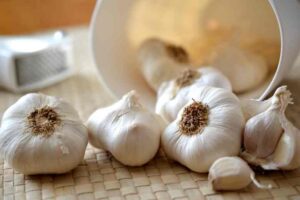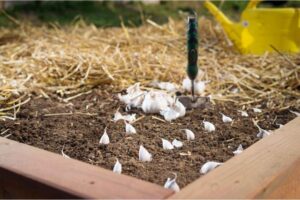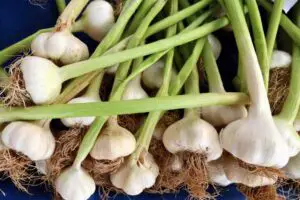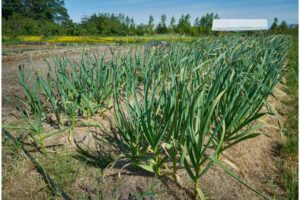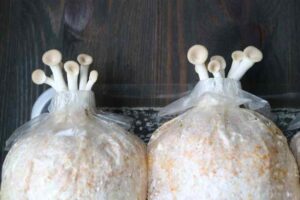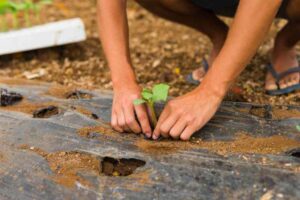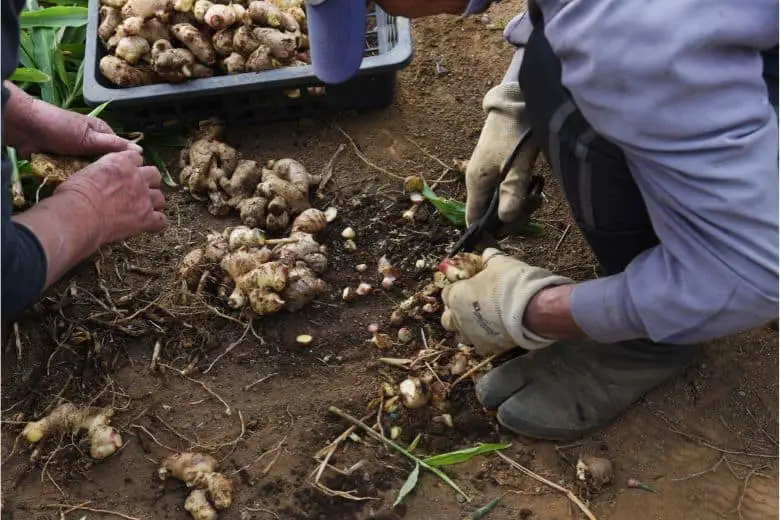
Have you ever considered growing your own ginger, even if you’re in a colder climate? Many believe it’s an impossible task, but the truth is, with the right methods and some patience, it can be done successfully. This might sound surprising to you, but the secrets to growing ginger in cold climates are within your reach.
Growing ginger in colder regions involves some specific steps that differ from traditional ginger cultivation methods. Firstly, it’s about creating a warm, cozy environment for your ginger plant indoors, especially during the frosty seasons. Secondly, selecting the right ginger variety – one that can withstand cooler temperatures – is crucial. Lastly, the timing of planting is important, usually best in early spring, to give your ginger plant the longest possible growing season.
But that’s not all, there’s much more to discover. In our comprehensive guide, we take you through the journey of growing ginger in cold climates, backed by the expert advice of renowned horticulturist, Dr. Jane Green. If you’ve always wished to grow your own ginger in colder regions but didn’t know where to start, this guide is for you. Let’s peel back the layers of this exciting venture together, and unearth the secrets to growing a thriving ginger plant, no matter your climate.
What is Ginger?
Ginger, a plant native to Southeast Asia, is famous for its aromatic, spicy root, which is used in a variety of dishes and medicinal preparations. The plant thrives in warm, humid climates. However, with a little effort, it can be adapted to colder environments.
Ginger and Climate
While it’s true that ginger prefers a more tropical setting, the plant is adaptable and can be grown in less ideal conditions. With the right care and attention, you can coax ginger to grow in climates that are cooler than its native habitat.
The Challenge of Cold Climates
Growing ginger in cold climates poses several challenges, primarily related to temperature and humidity. Ginger needs warmth to grow, and the cold can cause the plant to become dormant or even die.
But don’t let this deter you! With the right strategies, you can nurture a ginger plant even in a chillier environment.
How to Grow Ginger in Cold Climates ( Step-by-Step Guide)
Growing ginger in a cold climate can be a bit challenging as it’s a tropical plant. However, with the right preparation and care, it can still be done. Here’s how you can grow ginger in a cold climate:
Step 1: Choosing the Right Ginger Root
Buy fresh ginger root from a garden store or online supplier. Choose a healthy looking piece with plenty of bumps, also known as “eyes”. These are similar to the eyes on a potato and are where the shoots will sprout from.
Step 2: Preparing the Ginger Root
Soak the ginger root overnight in warm water to prepare it for planting. This helps to stimulate growth.
Step 3: Planting the Ginger Root
Plant the ginger root in a pot rather than directly in the ground. This is because you’ll need to bring the plant indoors during the colder months. Fill the pot with well-draining, fertile soil. Place the ginger root in the soil with the eyes facing upwards and cover with about an inch of soil. Water the soil lightly.
Step 4: Choosing the Right Location
Ginger needs a lot of indirect sunlight, but it can also tolerate shade. In colder climates, place the pot near a south-facing window, where it can get the most sunlight. If you don’t have a south-facing window, use a grow light.
Step 5: Caring for the Ginger Plant
Ginger prefers warm, humid conditions. Try to maintain a temperature around 70-80 degrees Fahrenheit. In winter, make sure it’s at least above 50 degrees. Water the plant regularly but make sure not to overwater. The soil should be moist, but not waterlogged. Use a spray bottle to occasionally mist the plant and keep the humidity high.
Step 6: Bringing the Ginger Plant Indoors
When the temperature drops in fall, it’s time to bring the ginger plant indoors. Place it in a well-lit, warm area and reduce watering. During winter, the ginger plant will go dormant. It may lose its leaves, but as long as the root is healthy, it will sprout again in spring.
Step 7: Harvesting Ginger
You can start harvesting ginger about 8 months after planting. Cut off a piece of the root, then re-cover the cut area with soil. After harvesting, you can continue to care for the plant to get more ginger.
Planting and Caring for Ginger Outdoors
When planting your sprouted ginger outdoors, place the plant in a spot that receives indirect sunlight. Regular watering is key, but be careful not to overwater, as this can lead to root rot.
Tips and Tricks for Cold Climate Ginger Growth
Here are some extra tips and tricks to help you grow ginger in a cold climate:
- Create a Mini Greenhouse: To give your ginger plant an extra boost of warmth and humidity, consider creating a mini greenhouse. This could be as simple as placing a clear plastic bag over the plant, or you could purchase a small indoor greenhouse. Remember to remove the cover regularly to allow the plant to breathe and prevent mold growth.
- Use a Heating Mat: A heating mat placed under the pot can help maintain a consistent and warm temperature for the ginger root. This is especially useful during the cooler months or if your home is drafty.
- Mulch for Protection: Mulch can help protect the ginger plant from cold, and it also helps retain moisture in the soil. You can use materials like straw, leaves, or wood chips. Be careful not to pile it up against the plant stem, though, to avoid rot.
- Maintain Humidity: Ginger plants love humidity. Placing the pot on a tray filled with pebbles and a bit of water can help increase humidity around the plant. Just make sure the pot isn’t sitting directly in the water, which could lead to root rot.
- Use Grow Lights: If you don’t have a south-facing window or adequate natural light, grow lights can be a great option. They can simulate sunlight and provide the light necessary for the plant’s growth.
- Ensure Proper Pot Size: Make sure the pot you choose is large enough for the ginger root to spread out. Ginger grows horizontally, so a shallow and wide pot is generally better than a narrow and deep one.
- Fertilize Regularly: Regular application of a balanced liquid fertilizer can promote healthier and faster growth.
- Prune Regularly: Pruning the plant can help direct energy to the roots. If you notice any leaves turning yellow or brown, prune them off.
- Check for Pests and Diseases: Regularly check your plant for signs of pests or disease, such as yellow leaves or spots. Indoor plants can sometimes attract insects like spider mites or aphids, which can be controlled with a mild soap and water solution.
By following these tips and tricks, you can make the process of growing ginger in a cold climate easier and more successful.
Frequently Asked Questions
Can ginger survive winter?
Answer: Yes, but it requires special care. If the temperature drops below 50°F (10°C), consider moving your plants indoors or using a greenhouse.
When is the best time to plant ginger in a cold climate?
Answer: The best time to start ginger indoors is in late winter or early spring. This gives the plants a head start before moving outdoors after the last frost.
How long does it take for ginger to grow in cold climates?
Answer: Ginger usually takes 8-10 months to mature. In colder climates, this can be slightly longer due to the less-than-ideal conditions.
How often should I water my ginger plants?
Answer: Water ginger plants regularly, but be sure not to overwater. The soil should be moist but not waterlogged.
Can ginger grow in shade?
Answer: Yes, ginger can grow in partial to full shade, making it ideal for colder climates where direct sunlight may be limited.
Conclusion
Growing ginger in a cold climate may seem challenging, but with the right strategies, it’s entirely possible. Start your plants indoors, choose the right rhizomes, prepare your soil well, protect your plants, and consider using a greenhouse. With these tips, you’ll be on your way to enjoying fresh, homegrown ginger, no matter the climate!

